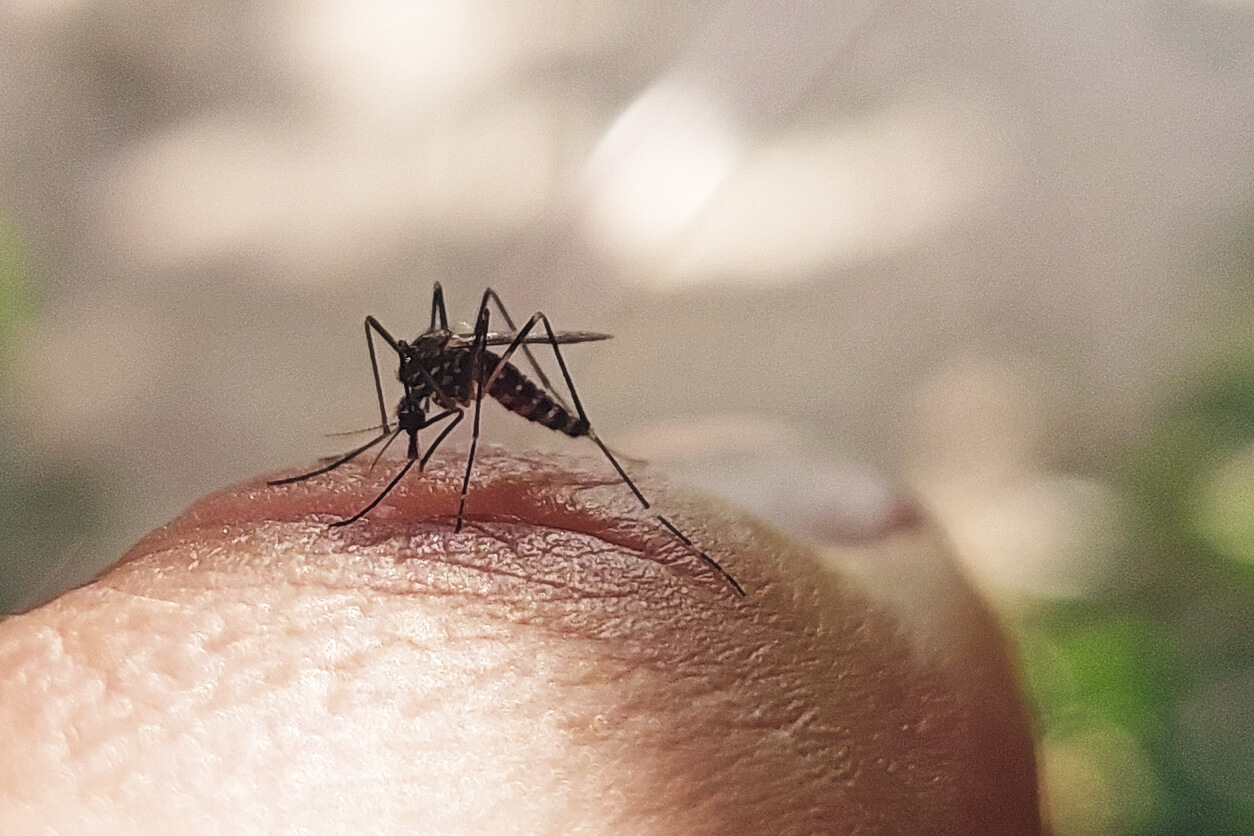
As overnight temperatures increase during the summer, so do mosquito populations, bringing with them the risk of mosquito-borne diseases.
In late June, the Centers for Disease Control warned that the U.S. is seeing an increased risk of dengue fever, a sometimes fatal viral disease transmitted by mosquitoes. This disease has been across much of South and Central America and the Caribbean, and with about 1,500 cases, the U.S. Commonwealth of Puerto Rico has declared a public health emergency over dengue.
Although Georgia has had no known local transmissions, the state had 24 traveler-related cases of the disease in 2023, and both Florida and Texas have had locally transmitted cases in recent years.
Hard-to-control mosquito transmits dengue, West Nile viruses
The Asian tiger mosquito (Aedes albopictus) has been shown to transmit dengue in some regions, so Georgia residents should take precautions to prevent infection. Fortunately, a standard of living that includes running water and access to air conditioning and screening helps to reduce the risk in the U.S.
West Nile virus continues to be the largest risk in Georgia, with 28 cases detected last year, resulting in two deaths.
These statistics demonstrate the real risk mosquitoes pose to public health. Now is the time to take sensible precautions, eliminate standing water, use Environmental Protection Agency (EPA)-approved repellents wisely and support your local mosquito abatement and public health agencies.
Most insect populations are strongly influenced by temperature and food. With mosquitoes, these two things go hand in hand. Mosquitoes require standing water for their larval and pupal stages to develop. When the temperature stays unusually warm overnight, the water in the containers, swamps and ditches also stays warmer. This allows the algae and organisms that serve as food for the mosquito larvae to grow faster, causing mosquito eggs, larvae and pupae to develop faster.
These factors can result in rapid increases in the number of pesky mosquitoes in your yard. Back in the spring, when temperatures would drop between 50 and 60 degrees Fahrenheit overnight, these habitats would cool off, just like the swimming pools in our yards and communities.
Warm summer nights increase mosquito populations
Climate change data shows that overnight temperatures have been rising nearly twice as fast as daytime highs. Recent studies may show this phenomenon slowing, but in general, as temperatures rise, the atmosphere can hold more moisture. This forms clouds, which serve almost like a blanket, preventing overnight temperatures from falling as much as they would on a clear night. Think of our coldest nights in winter, when it’s always clear and starry.
What does this mean for us? It’s time to get serious about mosquito prevention and take precautions. Eliminating standing water and preventing mosquito bites are the two most important parts of preventing the spread of mosquito-borne diseases.
In many communities, eliminating the containers that hold water will go a long way toward minimizing nuisance mosquito populations. The Asian tiger mosquito prefers to develop in buckets, tires and containers of any type. This includes the trays under plants, which are a common site for larval mosquito development around the home. The Asian tiger mosquito is known as a daytime biter, while most mosquitoes are more active at dawn and dusk, and typically flies less than 100 yards, or the length of a football field. Residents need to be on the lookout for containers, tarps, abandoned pools, drainage systems and anything that can hold water and serve as mosquito breeding grounds.
In some areas, it’s more than just containers growing mosquitoes. Coastal marshes have a long history of producing huge numbers of mosquitoes. The species that develop in these areas can fly and be blown long distances from their larval habitats. River bottoms, swamp lands and low-lying areas can produce extreme mosquito activity.
Protect yourself from mosquito bites
Effectively preventing mosquito bites is critical, especially in environments where mosquitoes thrive.
In Georgia we have 63 species of mosquitoes, but only female mosquitoes bite. Female mosquitoes use the blood meal to stimulate and sustain egg development. Each type of mosquito has a preferred host to feed on, including some birds, some small animals and some people. This is why only certain species transmit certain diseases.
Preventing bites starts with wearing loose-fitting, light-colored pants and long-sleeved shirts. The light colors provide less contrast in the environment, so the female can’t see you move as easily, and it makes a lesser heat signature.
Exposed skin should be treated with an EPA-approved repellent. DEET remains the gold standard, approved for children as young as 2 months, but other active ingredients are available, including lemon eucalyptus oil, Picaridan and IR3535. As always, follow the label instructions when using these materials.
More information on mosquito control can be found in University of Georgia Cooperative Extension publication “Best Practices of Integrated Mosquito Management.” For specific advice on eliminating mosquito habitats in your area, contact your local UGA Extension agent for assistance.






